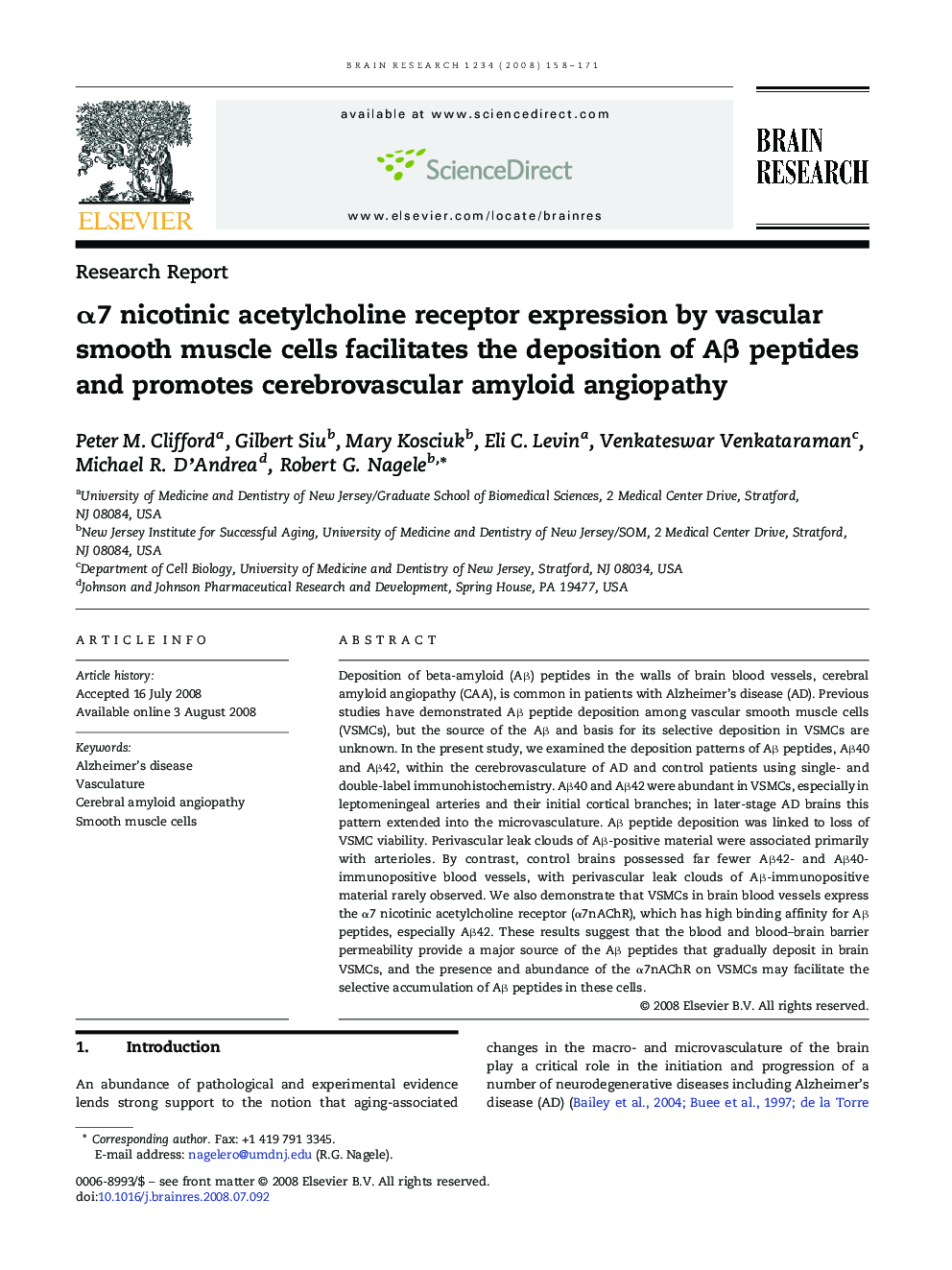| Article ID | Journal | Published Year | Pages | File Type |
|---|---|---|---|---|
| 4329099 | Brain Research | 2008 | 14 Pages |
Abstract
Deposition of beta-amyloid (Aβ) peptides in the walls of brain blood vessels, cerebral amyloid angiopathy (CAA), is common in patients with Alzheimer's disease (AD). Previous studies have demonstrated Aβ peptide deposition among vascular smooth muscle cells (VSMCs), but the source of the Aβ and basis for its selective deposition in VSMCs are unknown. In the present study, we examined the deposition patterns of Aβ peptides, Aβ40 and Aβ42, within the cerebrovasculature of AD and control patients using single- and double-label immunohistochemistry. Aβ40 and Aβ42 were abundant in VSMCs, especially in leptomeningeal arteries and their initial cortical branches; in later-stage AD brains this pattern extended into the microvasculature. Aβ peptide deposition was linked to loss of VSMC viability. Perivascular leak clouds of Aβ-positive material were associated primarily with arterioles. By contrast, control brains possessed far fewer Aβ42- and Aβ40-immunopositive blood vessels, with perivascular leak clouds of Aβ-immunopositive material rarely observed. We also demonstrate that VSMCs in brain blood vessels express the α7 nicotinic acetylcholine receptor (α7nAChR), which has high binding affinity for Aβ peptides, especially Aβ42. These results suggest that the blood and blood-brain barrier permeability provide a major source of the Aβ peptides that gradually deposit in brain VSMCs, and the presence and abundance of the α7nAChR on VSMCs may facilitate the selective accumulation of Aβ peptides in these cells.
Related Topics
Life Sciences
Neuroscience
Neuroscience (General)
Authors
Peter M. Clifford, Gilbert Siu, Mary Kosciuk, Eli C. Levin, Venkateswar Venkataraman, Michael R. D'Andrea, Robert G. Nagele,
